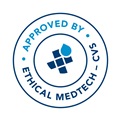
Biography
Biography: Julien Wen HSIEH
Abstract
Background: Smell dysfunction severely affects human health. Olfactory tests are available; however, they have two shortcomings: (a) the testing scores depend on familiarity with the odors used in the test, and (b) they rely on the detection of a single type of molecules and people are frequently insensitive to single types of molecules, due to differences in genetic background, which are unrelated to health. This leads to misdiagnosis. To address these issues, we developed a set of olfactory tests designed to be useful in all genetic and cultural populations: The General Olfactory Threshold (GOT) and the Olfactory Resolution (OR) tests.<br>
Objectives: To investigate whether (a) the GOT test is reliable and can discriminate between subjects with low sensitivity to phenyl ethyl alcohol and anosmic subjects, and whether (b) the OR test is reproducible and measures a different aspects of olfactory perception than GOT test.<br>
Methods: The design was a test-retest reliability study. The primary outcome measure was the testing score of a butanol threshold, phenyl ethyl alcohol threshold, GOT 1, GOT 2, OR 1, and OR 2 tests. Results: A total of 75 subjects were recruited (mean age: 44.06 ± 16.77; range: 21 to 72). Regarding the GOT tests, we found that the single measure of intra class correlation coefficient was 0.43 and 0.63 for GOT 1 and GOT 2, respectively. The inter-individual variability of the GOT score was reduced compared to the olfactory threshold test (Olfactory threshold versus GOT 1: F (74, 74) = 2,982 P<0.0001; Olfactory threshold versus GOT 2: F(74,73)=2,579 P<0.0001 ). The only anosmic subject could be detected with the GOT test, but not with the olfactory threshold test. The Intra-class Correlation Coefficient of OR 1 and OR 2 was 0.74 and 0.65, respectively. We showed that the Pearson’s correlation between threshold and resolution tests is small (r=0.164-0.365), whereas the correlation between tests of the same kind is greater, especially if they were the novel smell tests (GOT 1 vs. GOT 2: r=0.62; OR 1 vs. OR 2: r=0.58).<>
Conclusion: We developed a reliable method to quantify the resolution and the general threshold of the olfactory system. We showed that this method is able to distinguish between healthy subjects with low sensitivity to phenyl-ethyl alcohol and subjects with a reduced general olfactory sensitivity. Both tests measured different aspects of the olfactory system.

